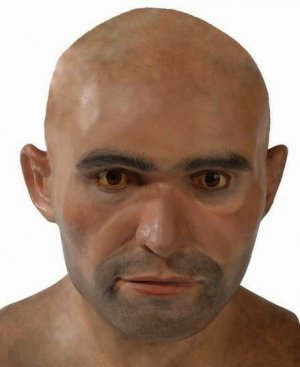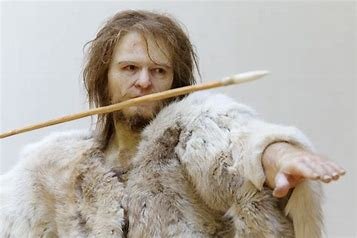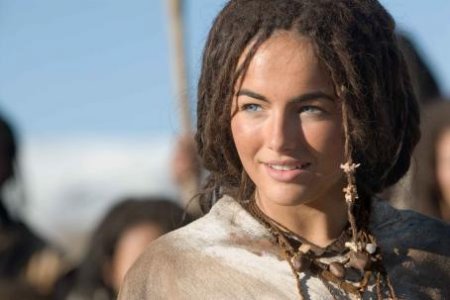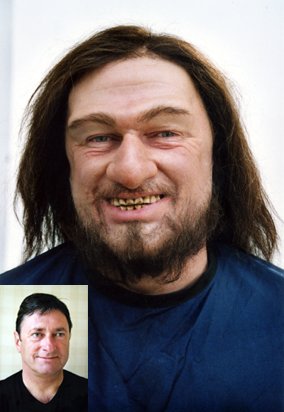senior chef
Senior Member
Though dates vary, the generally accepted time frame of when the first "modern" human's ( Cro-magnon) entered Europe is 48,000 years ago. For all intents and purposes, they did not differ much from us. Based on fossil reconstructions, if we could dress one of them up in 21st century clothing, it is unlikely that he/she would look any different from us.
It is from these people that we get the majority of our DNA. (speaking of European heritage only). While it is certainly true that Cro-Magnon inter-bred with Neanderthals, that inter-breeding was not common. People of European heritage get aprox 1.5 to 2.4 % of our DNA from Neanderthals. Every descendent of European heritage has some Neanderthal DNA.
We like to think of ourselves as fully modern, however, our bodies, and our brains were finally shaped during those Cro-magnon times. And that accounts for the body difference between males and females of today.
Speaking in GENERAL TERMS ONLY, the male of today is larger, stronger, has a thicker, stronger bone structure than the female of today. He is bred for close combat with large, immensely strong wild animals. Note also that he is much less verbal than the female. Why ? As any hunter can tell you, the hunter needs to keep his mouth shut, so as to not scare off any game. He wants/needs to get in close with the wild animal.
The modern female has evolved for an entirely different purpose in mind. She was designed by nature to bear children. Much of her body is designed for child bearing AND raising of those children. Even her bone structure is different. Her pelvis, unlike that of the male, stretches to assist in child birth. Her breasts were designed for one purpose only, to make milk to feed the infant.
Her verbal skills are often greater than that of the male. Why ? As the male was out and about being the hunter, she was the "gatherer" . With infant in tow, she collected fruits, berries, nuts, tubers, fungi, and all manner of vegetables. Again, as any naturalist can tell you, if you talk as you wander thru the wilds, animals will leave the scene. Talking actually protected females from the wild breasts. We can imagine a scene from those pre-historic times. Groups of females banded together in search of vegetable matter, and as they searched they chatted back and forth among themselves. Wild animals, generally speaking, vanished.
IMPORTANT NOTE HERE: I do not suggest that one gender is any better or more superior than the other. I only mean that they are DIFFERENT.



It is from these people that we get the majority of our DNA. (speaking of European heritage only). While it is certainly true that Cro-Magnon inter-bred with Neanderthals, that inter-breeding was not common. People of European heritage get aprox 1.5 to 2.4 % of our DNA from Neanderthals. Every descendent of European heritage has some Neanderthal DNA.
We like to think of ourselves as fully modern, however, our bodies, and our brains were finally shaped during those Cro-magnon times. And that accounts for the body difference between males and females of today.
Speaking in GENERAL TERMS ONLY, the male of today is larger, stronger, has a thicker, stronger bone structure than the female of today. He is bred for close combat with large, immensely strong wild animals. Note also that he is much less verbal than the female. Why ? As any hunter can tell you, the hunter needs to keep his mouth shut, so as to not scare off any game. He wants/needs to get in close with the wild animal.
The modern female has evolved for an entirely different purpose in mind. She was designed by nature to bear children. Much of her body is designed for child bearing AND raising of those children. Even her bone structure is different. Her pelvis, unlike that of the male, stretches to assist in child birth. Her breasts were designed for one purpose only, to make milk to feed the infant.
Her verbal skills are often greater than that of the male. Why ? As the male was out and about being the hunter, she was the "gatherer" . With infant in tow, she collected fruits, berries, nuts, tubers, fungi, and all manner of vegetables. Again, as any naturalist can tell you, if you talk as you wander thru the wilds, animals will leave the scene. Talking actually protected females from the wild breasts. We can imagine a scene from those pre-historic times. Groups of females banded together in search of vegetable matter, and as they searched they chatted back and forth among themselves. Wild animals, generally speaking, vanished.
IMPORTANT NOTE HERE: I do not suggest that one gender is any better or more superior than the other. I only mean that they are DIFFERENT.



Last edited:


